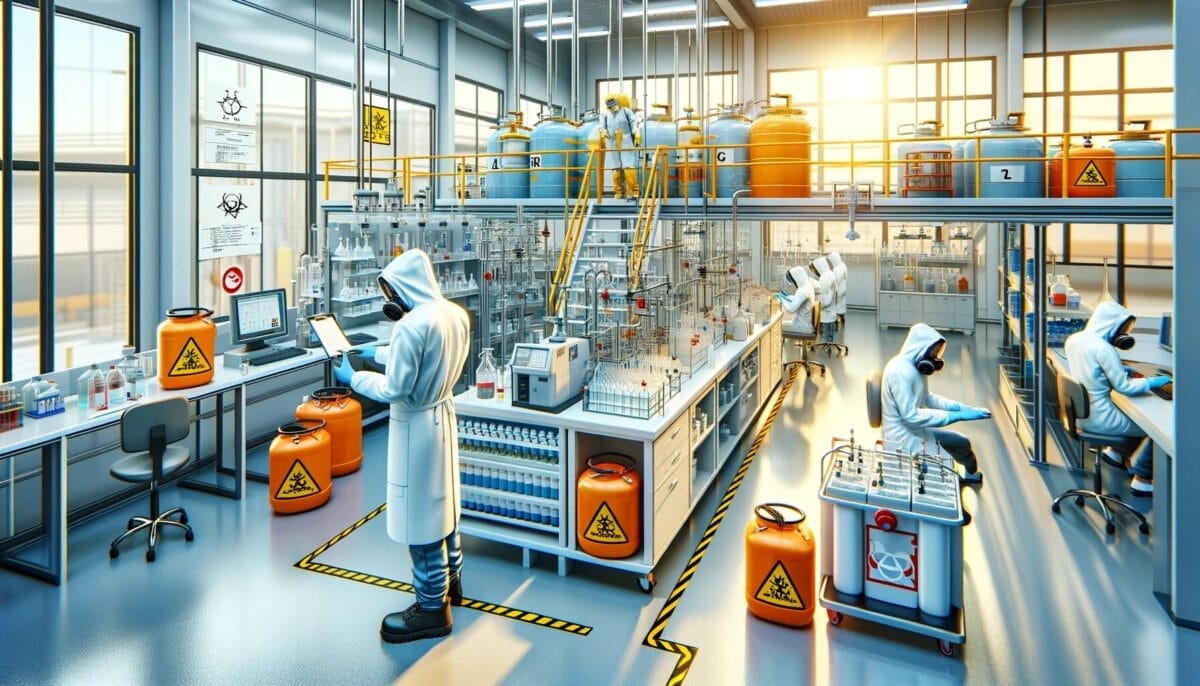Abstract
The criticality of establishing and adhering to rigorous occupational standards for handling hazardous chemicals cannot be overstated. This discourse aims to elucidate the comprehensive frameworks and protocols essential for the safe and effective handling of hazardous chemicals, a subject that bears immense significance for public health, environmental sustainability, and workplace safety.
Introduction
In the realm of occupational health and safety, handling hazardous chemicals represents a significant challenge. These substances, characterised by their potential to cause harm to humans, wildlife, and the environment, necessitate stringent control measures. The urgency and importance of this topic are underpinned by the increasing reliance on chemicals in various industries and the concomitant risks associated with their mismanagement.
Defining Hazardous Chemicals
Hazardous chemicals are substances that possess toxic, corrosive, flammable, explosive, or reactive properties. Australian standards, such as those set forth by Safe Work Australia, categorise these substances based on their health and physical hazards. It is imperative to understand these categorisations to implement effective handling protocols.
Legislative Framework in Australia for Handling Hazardous Chemicals
Australia’s approach to regulating handling hazardous chemicals is grounded in a robust legislative framework. Key legislations include the Work Health and Safety Act and regulations underpinned by the Code of Practice for the Management and Control of Hazardous Chemicals in the Workplace. These laws mandate risk assessments, proper labelling, safety data sheets, and the implementation of control measures.
Handling Hazardous Chemicals Risk Assessment
Central to safely handling hazardous chemicals is the process of risk assessment. This entails identifying potential hazards, evaluating the likelihood and severity of harm, and implementing control measures. The hierarchy of controls, ranging from elimination to personal protective equipment (PPE), provides a systematic approach to minimising risks.
Control Measures
Effective control measures are the linchpin of safe chemical handling. Engineering controls, such as ventilation systems, and administrative controls, including training and standard operating procedures, play crucial roles. The use of PPE, while considered the last line of defence, remains an indispensable aspect of occupational safety standards.
Training and Competency
Ensuring that personnel are adequately trained and competent in handling hazardous chemicals is a non-negotiable aspect of occupational safety. Training programs must cover the nature of the hazards, safe handling procedures, emergency response, and the proper use of PPE. Australian standards emphasise continual training and assessment to address the evolving nature of chemical risks.
Emergency Preparedness and Response
Equally critical is the establishment of robust emergency response plans. These should encompass spill management, first aid, fire control, and evacuation procedures. Regular drills and the availability of appropriate emergency equipment are integral to preparedness.
Storage and Disposal
Proper storage and disposal of hazardous chemicals are pivotal to preventing accidental release and environmental contamination. Australian standards dictate specific requirements for storage facilities, including labelling, segregation, and security. Equally important is adherence to environmentally sound disposal methods, ensuring compliance with national and local regulations.
Monitoring and Health Surveillance
Ongoing monitoring of the workplace environment and health surveillance of workers are indispensable components of a comprehensive chemical safety program. These practices aid in the early detection of chemical exposure and health effects, enabling timely intervention and prevention of long-term health issues.
Continuous Improvement and Compliance
Adherence to occupational standards is not a static process but requires continuous improvement and regular compliance checks. Audits, reviews, and updates of safety procedures in response to incidents, new information, or changes in legislation are fundamental to maintaining high safety standards.
Conclusion
In conclusion, the handling of hazardous chemicals demands a rigorous and comprehensive approach, underpinned by a robust legislative framework and a commitment to continuous improvement. The establishment of strict occupational standards is not merely a regulatory requirement but a moral imperative to safeguard human health, protect the environment, and ensure workplace safety. As industries evolve and new chemicals emerge, the ongoing review and adaptation of these standards remain a critical endeavour for all stakeholders.
If you would like to know more or would like our assistance in the areas mentioned check us out at www.intrinsicsafety.com.au. Alternately, call us on 1300 990 336 or email us at [email protected]



